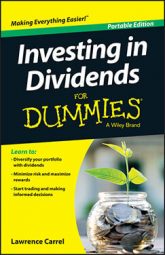The government is constantly fiddling with the tax code in an attempt to collect taxes without choking the life out of the economy. As a result, those tax incentives can go poof any time Congress decides to pull the plug or simply fails to renew the incentives before they expire. Some changes in the way returns are taxed can even tip the scales when you're trying to decide which investment is a better deal.
Start taxing dividends as ordinary income, for example, and the number of companies paying dividends and the number of investors buying dividend stocks soon slump.
As the government fiddles with the tax code, be prepared to adjust your strategy accordingly. Crunch the numbers to determine your real (after-tax) return on a particular investment and see whether you can improve your real return by moving you money to a different investment type.
Here's a formula for calculating the after-tax return on an investment:
After-Tax Return = Percent Return x (1.00 – Percent Tax)
For example, if a particular investment earns you a 7.5 percent return and is taxed at 20 percent:
.075 x (1.00 – .20) = .06 or 6 percent
Suppose you own a dividend stock that's generating a total return of about 7 percent. Approximately 4 percent of that is from capital gains, and the other 3 percent is from dividends. Further, suppose you're paying 15-percent tax on both capital gains and dividends:
.07 x (1.00 – .15) = .0595 or 5.95 percent
Now, imagine you can purchase a bond that earns a 9-percent return but that's taxed as ordinary income at 35 percent:
.09 x (1.00 – .35) = .0585 or 5.85 percent
The two returns after taxes are pretty much a tossup. You may favor the bond because it's the same return with less risk, or you may favor the dividend stock because it has the potential of share price appreciation and dividend growth.
Now suppose the tax benefits of the JGTRRA expire and you have the misfortune of having your income place you in the top income tax bracket. The after-tax return on your dividend stock suddenly looks a little less comparable. Your capital gains are now subject to a 20-percent tax, and your dividends are taxed as ordinary income at a rate of 38.6 percent:
.04 x (1.00 – .20) = .032 or 3.2 percent
.03 x (1.00 – .386) = .01842 or 1.842 percent
Adding those two figures together, your after-tax return is now slightly more than 5 percent, causing you to lean a little closer to investing in bonds.

